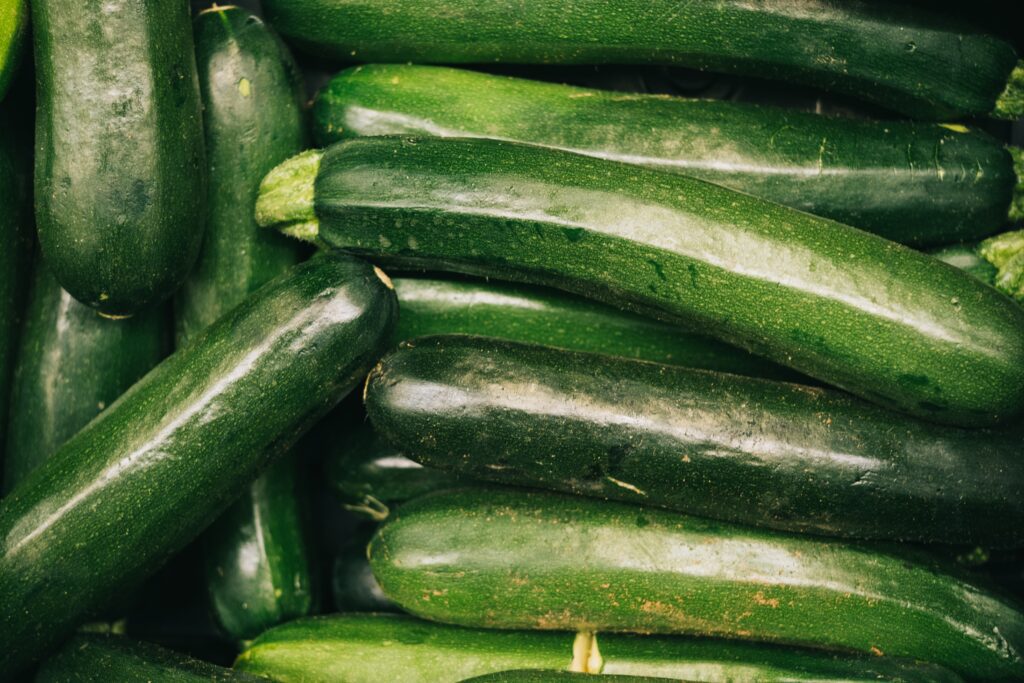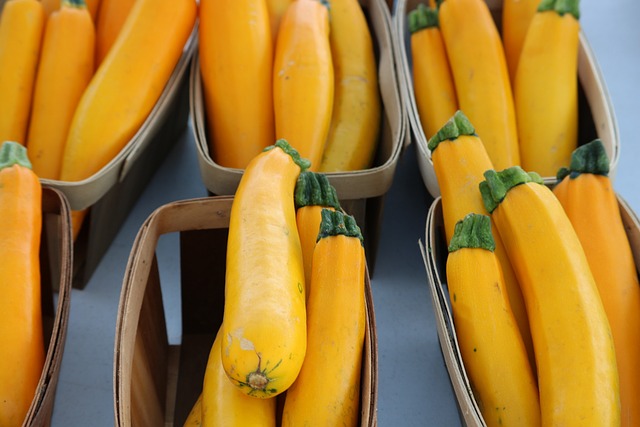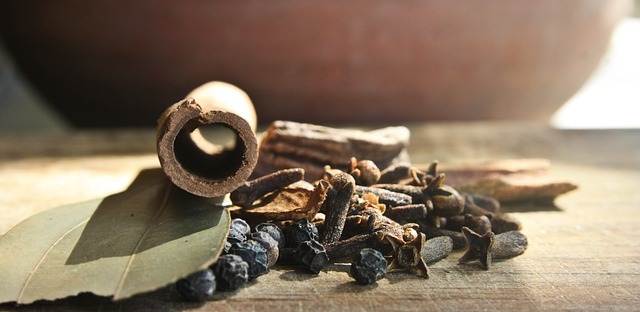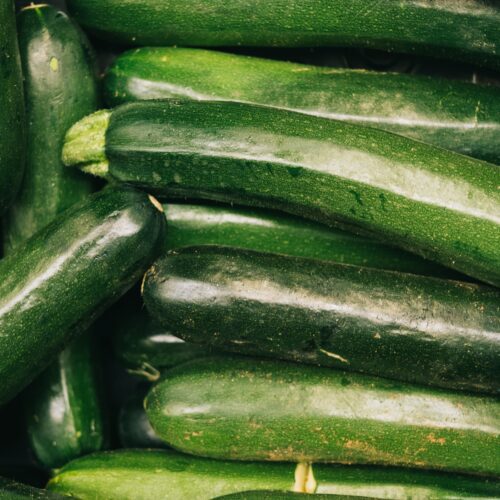What’s in a name? Sometimes, quite a lot. This is certainly the case with courgette chutney. The term “chutney” conjures up all sorts of images and possibilities – from sweet, fruity concoctions to spicy, aromatic blends. But one thing all chutneys have in common is that they are a savoury condiment, meant to enhance the flavours of other dishes. Courgette (zucchini) chutney is a perfect example of this. This is a delicious way to preserve the summer’s (almost inevitable) bounty of courgettes and can be used in endless ways as an accompaniment to a wide range of dishes.

If you’re like me and grew up eating store-bought chutney, then you’re in for a real treat when you make your own. Homemade courgette (zucchini) chutney is bursting with flavour—sweet, tangy, and a little spicy. It’s the star of any dish that calls for chutney, from sandwiches to stews to tandoori chicken. Plus, it’s really easy to make. All you need is a few simple ingredients and a little patience while it cooks down on the stovetop. So give it a try – you won’t be disappointed!
Why make Courgette Chutney
Making chutney is a great way to add flavour to dishes, and it’s also a great way to use up any spare vegetables you might have. Courgette is a perfect vegetable for chutney, as it has a mild flavour that forms a good base for the other ingredients. This recipe yields a delicious and flavoursome chutney that can be enjoyed with a wide range of meals.
Chutneys are a type of preserve that can be made with a variety of fruits and vegetables. So if you have an abundance of courgettes from your garden, from friends or family or local farmers’ market, don’t let them go to waste – make some delicious courgette chutney.
How to make Courgette Chutney

You can make this chutney with either green or yellow courgettes. It is traditionally flavoured with ginger, mustard seeds, and vinegar amongst other ingredients.
The key to making a good courgette chutney is to cook the courgettes slowly so that they retain their flavour and texture. With a little patience, you will be able to create your delicious courgette chutney at home.
Choose courgettes that are fresh and firm, without any blemishes or bruises. Then, you’ll need to wash them thoroughly and cut them into slices or chunks. Make sure to take the step of salting the cut courgettes and leaving them to drain the excess water and this influences the texture of the resulting chutney – this step reduces the tendency of the courgette pieces to soften into a mushy pulp when cooking.
Then blend and cook the spice paste made up of the apples, onions, garlic, ginger, spices and some oil. Heat up the mustard seeds in the remaining oil until they start popping, then add the spice paste and cook briefly.
Next, it’s time to add the courgettes, vinegar and sugar to this base mix. Once you stir all of the ingredients together to ensure uniformity and to encourage the sugar to dissolve, allow the mixture to cook gently for around 40min or until a spoon dragged through the mixture leaves a clear trail that slowly refills.
Once the chutney has reached a desired consistency, and your clean jars are lined up, you can start to pour the chutney into sterilized jars and seal them tightly. Let them cool completely before storing in a cool dark place to allow the chutney to mature for 3-4 weeks – during this time the flavours will develop and mellow.
TIPS
1. Start with a small batch: When you’re first starting to make chutney like this, it’s best to make a small batch of courgette chutney. This allows you to test-drive the recipe and decide on flavourings and textures that you might prefer. Also, you get to learn about the role that other variables may play in the outcome of the preserve, e.g. the utensils used, types of ingredients used etc. That way, if you don’t like the final product, you haven’t wasted a lot of ingredients. You can always double or triple the recipe once you’ve perfected it.
2. Consider using a food processor: A food processor will make quick work of chopping the courgettes and other vegetables. This is especially helpful if you’re making a large batch of chutney.
3. Add acidity: Courgette chutney tends to be on the sweet side, so adding a bit of acidity will help to balance out the flavours. You can do this by adding vinegar or lemon juice.
4. Cook slowly: Don’t be tempted to crank up the heat to speed things up. Cooking the chutney too quickly will result in a thinner consistency and less flavour development. Just be patient and let it simmer until it’s thick and delicious.
5. Know when it’s done: The chutney is finished when it’s thick enough to coat the back of a spoon and has turned a deep golden brown colour. Don’t let it go too long, or else it will start to burn.
Customising your Chutney
There are many different ways to customize the flavour of courgette chutney to suit your taste and needs.

- Choose your favourite herbs and spices to flavour your chutney, such as cloves, or cinnamon.
- Add in some other chopped fruits or vegetables for extra texture and flavour. Options may include tomatoes or sliced/grated carrots.
- Make it your own by adding more heat with chopped, deseeded, fresh chillies.
- Another way to change up the flavour is to use different types of vinegar, such as malt vinegar or balsamic vinegar.
- You can also experiment with the ratio of sugar to vinegar, depending on how sweet or tangy you want the chutney to be.
- Try to serve the chutney at room temperature so take it out of the fridge up to an hour ahead of use. Then consider adding some chopped nuts (or even some nut butter) for further flavour and texture.
So get creative and experiment with different ingredients until you find a combination that you love!
Ways to enjoy this pickle
This versatile preserve is delicious with cheese and crackers, as a dip for roasted vegetables, or simply spread on toast and topped with grated cheese. Here are five other ways to use and enjoy courgette chutney:
1. Make a cheese board or charcuterie board extra special by serving courgette chutney alongside your favourite cheeses and cold meats.

2. Courgette chutney is the perfect condiment for grilled meats, fish or roasted vegetables.
3. Add a dollop of courgette chutney to your favourite soup or stew recipe for an extra layer of flavour.
4. Upgrade an otherwise simple sandwich or burger by adding some courgette chutney. And you must try it as part of a grilled cheese on toast experience.
5. Use as a marinade or glaze for chicken or pork.
6. Mix some courgette chutney with yoghurt or cream cheese to make a tasty dip. You can then emjoy it with crackers, crisps or as part of a raw vegetable platter.
7. Use the chutney as part of a cheese salad or Ploughman’s plate.
Courgette chutney is a delicious and easy way to enjoy one of the bountiful stars of summer, courgettes. With this recipe you can make a delightful condiment to use in a wide variety of ways, long after the courgette harvest has come and gone.
So, whether you’re looking for a new condiment to brighten up your sandwiches or want something special to serve with your Sunday roast, this courgette chutney is sure to please.
Give it a try and let a courgette preserve light up your meals.

Courgette Chutney Recipe
Equipment
- Kitchen scales
- Chopping board and knife
- Colander
- Bowl to fit under the colander
- Food processor/blender
- Large saucepan
- Long-handled spoon for stirring
- Ladle
- Jam Funnel
- Clean, sterilised glass jars with sealable, non-reactive, lids
Ingredients
- 1 kg courgettes
- 200 g apples
- 200 g raisins/sultanas, or mix of the two.
- 500 g onions
- 4 cloves garlic
- 30 g fresh ginger
- 300 ml apple cider vinegar
- 80 ml vegetable oil
- 1 tsp dried chilli flakes
- 1½ tsp cumin powder
- 2 tsp coriander powder
- 1 tsp turmeric powder
- 200 g brown sugar
Instructions
- Rinse the courgettes, then trim away the stalks.
- Halve and quarter large courgettes lengthways then cut into medium chunks. Cut any small courgettes into similar chunks; or if you are using only small courgettes, you may want to consider just cutting them into 1.5cm slices.
- Place the colander over the bowl, and fill the colander with the cut courgettes. Sprinkle with the salt and mix the salt through the cut courgettes. Cover the colander with a piece of greaseproof paper and, if possible, weigh down the paper with a small plate. Leave this to stand for 2-4 hours, so that the salt can draw water from the courgette pieces – this step will reduce the risk of the courgettes softening too much and becoming a courgette puree during cooking.
- While the courgette water is draining, clean, peel and chop up the apples, onions, ginger and garlic. Add these to the food processor with the spices and 40ml of vegetable oil and blitz to a fragrant paste. (depending on the size of your food processor/blender you may have to do this in batches, so divide the oil accordingly).
- Now rinse the salted courgette pieces with cold water to remove the excess salt; allow to drain – then either use some kitchen paper or a clean tea towel and dry the pieces well before the cooking stage.
- Add the remaining oil to your saucepan on medium heat and add the mustard seeds, moving them around gently until they start to pop ( should just need a couple of minutes).
- Once the mustard seeds start popping, add the spiced paste to the saucepan and cook this for about 5 minutes – making sure to stir while this is happening to prevent scorching.
- Add the courgette pieces with the apple cider vinegar and the sugar. Stir through to incorporate everything and to encourage the sugar to dissolve completely.
- Adjust the heat to allow the mixture to gently cook for 40-50min, stirring regularly. The liquid will reduce, and you will notice the mixture thickening.
- Line up your clean sterilised jars, with lids that will not react with the vinegar.
- Once the chutney has thickened sufficiently, ladle it into the jars – gently pack in the mixture and remove any air bubbles. Seal with lids, and let it stand at room temperature to cool completely.
- Store in a cool, dark place and allow the flavours to develop and mature for 3-4 weeks before use. The chutney can also be stored in this place for up to a year.Once opened, keep the jar in the refrigerator and make sure to use it within 3 months.
Notes
TIPS
1. Start with a small batch: When you’re first starting to make chutney like this, it’s best to make a small batch of courgette chutney. This allows you to test-drive the recipe and decide on flavourings and textures that you might prefer. Also, you get to learn about the role that other variables may play in the outcome of the preserve, e.g. the utensils used, types of ingredients used etc. That way, if you don’t like the final product, you haven’t wasted a lot of ingredients. You can always double or triple the recipe once you’ve perfected it. 2. Consider using a food processor: A food processor will make quick work of chopping the courgettes and other vegetables. This is especially helpful if you’re making a large batch of chutney. 3. Add acidity: Courgette chutney tends to be on the sweet side, so adding a bit of acidity will help to balance out the flavours. You can do this by adding vinegar or lemon juice. 4. Cook slowly: Don’t be tempted to crank up the heat to speed things up. Cooking the chutney too quickly will result in a thinner consistency and less flavour development. Just be patient and let it simmer until it’s thick and delicious. 5. Know when it’s done: The chutney is finished when it’s thick enough to coat the back of a spoon and has turned a deep golden brown colour. Don’t let it go too long, or else it will start to burn.Customising your Chutney
There are many different ways to customize the flavour of courgette chutney to suit your taste and needs.- Choose your favourite herbs and spices to flavour your chutney, such as cloves, or cinnamon.
- Add in some other chopped fruits or vegetables for extra texture and flavour. Options may include tomatoes or sliced/grated carrots.
- Make it your own by adding more heat with chopped, deseeded, fresh chillies.
- Another way to change up the flavour is to use different types of vinegar, such as malt vinegar or balsamic vinegar.
- You can also experiment with the ratio of sugar to vinegar, depending on how sweet or tangy you want the chutney to be.
- Try to serve the chutney at room temperature so take it out of the fridge up to an hour ahead of use. Then consider adding some chopped nuts (or even some nut butter) for further flavour and texture.
Ways to enjoy this pickle
This versatile preserve is delicious with cheese and crackers, as a dip for roasted vegetables, or simply spread on toast and topped with grated cheese. Here are five other ways to use and enjoy courgette chutney: 1. Make a cheese board or charcuterie board extra special by serving courgette chutney alongside your favourite cheeses and cold meats. 2. Courgette chutney is the perfect condiment for grilled meats, fish or roasted vegetables. 3. Add a dollop of courgette chutney to your favourite soup or stew recipe for an extra layer of flavour. 4. Upgrade an otherwise simple sandwich or burger by adding some courgette chutney. And you must try it as part of a grilled cheese on toast experience. 5. Use as a marinade or glaze for chicken or pork. 6. Mix some courgette chutney with yoghurt or cream cheese to make a tasty dip. You can then emjoy it with crackers, crisps or as part of a raw vegetable platter. 7. Use the chutney as part of a cheese salad or Ploughman’s plate.Nutrition
Nutritional Disclaimer
All nutritional information is an estimate only, based on third-party calculations derived from an online nutritional calculator, Spoonacular API. The data provided is a courtesy and should not be considered a guarantee or fact. Each recipe and nutritional value will vary depending on the ingredients and brands you use, your measuring methods and portion sizes. For accurate results, we recommend that you calculate the nutritional information yourself, using a preferred nutritional calculator or advice from a nutritionist, based on your ingredients and individual processes.